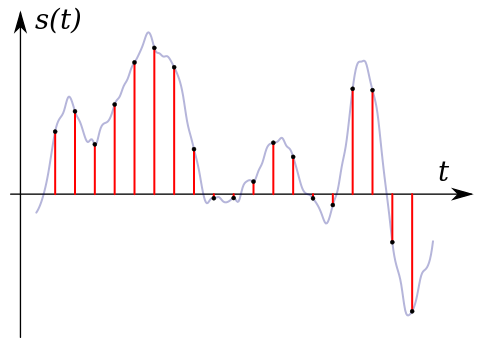Analog and Digital Signals | 3/25/19-3/29/18
Summary:
Analog technology is a representation or analogy of some type of measurement. Analog technology usually consists of a dial. Some examples of analog technology are a clock and speedometer. Most of the time, when speaking of analog technology, we usually just mean something that is not digital. Digital technology is when information (measurements) are converted to numbers/digits and the numbers are stored or displayed. Sampling is when splitting occurs in regular intervals to convert analog to digital form. Sampling converts continuous signal to discrete signal then reconstruction turns discrete signal back to a continuous signal. Although, this new continuous signal created by digital technology, is not as exact as the original. This is due to how the accuracy of analog signal is more than digital because digital signal is finite.
S&EP 8-Obtain, Evaluate, and Communicate Information:
This week in science I obtained, evaluated, and communicated information when presenting my musical instrument project. The information that we (my group) obtained our instruments musical note sound waves. We evaluated this information to explain the relationships between the appearance of a wave and the loudness or pitch of it along with the relationship between frequency and pitch. We communicated this information through creating a google draw, an audiovisual presentation, a document that explained our instruments sound waves, and a performance of a song using only our instrument. Lastly, we actually presented all of the things mentioned in the last sentence in front of the whole class.
XCC-Energy and Matter:
The system that I identified this week that heavily involves energy and matter are analog and digital technologies. Energy, is what these two different technologies both rely on to actually receive information. Without energy, no measurements would be collected by these two technologies for them to actually display. Furthermore, matter is what actually allows these two technologies display information. Without matter, it would be impossible for analog and digital technologies to express the information they receive, even if they actually do collect information with the help of energy. This is how energy and matter are related to analog and digital technologies. As both analog and digital technologies require energy and matter to receive and display information.
 |
| Analog digital series by Mwtoews Description: Digital representation of an analog time-series sampled at a fixed sample rate |
Comments
Post a Comment